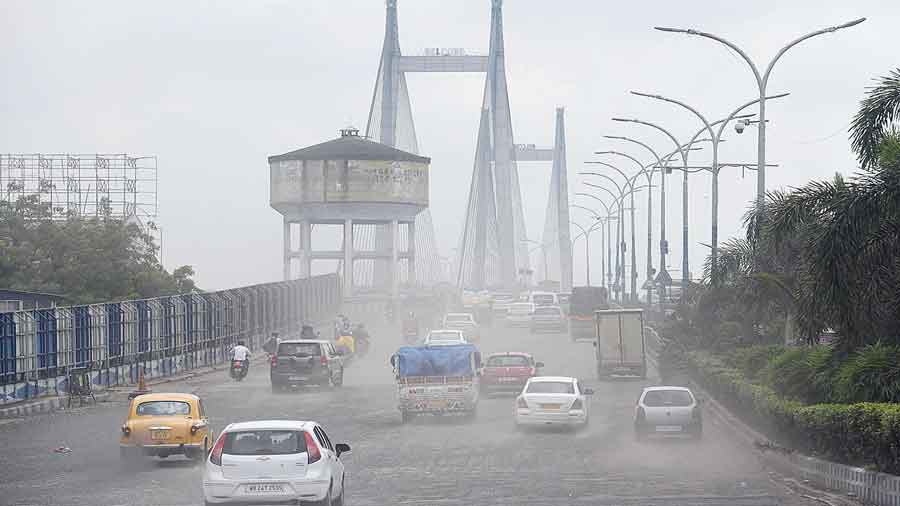Pothole-riddled, worn-out roads not only make the rides bumpy but the dust that rises when vehicles move over them is also deadly.
The dust contains tiny particles like PM2.5 that travel with the air for long distances and can impact people living far away from the broken roads, said a scientist who researches the causes and impacts of poor air.
On Friday afternoon, The Telegraph found a haze of dust covering the city-bound flank of the second Hooghly bridge immediately after crossing the toll plaza.
An officer of Kolkata Police’s traffic department who manages traffic in the area said the top bituminous layer has been scraped off for repairs on a 200-metre stretch. The dust was a result of vehicles moving over the unpaved portion.
He said a similar problem was being encountered on King’s Way along the Maidan where also the top bituminous layer has been scraped off from a stretch.
A senior official of the Hooghly River Bridge Commissioners (HRBC), the custodian of Vidyasagar Setu, said “the dust will be there till the work is completed”.
“It is raining and we had to stop the work because of the rain. There is no way we can control whatever little dust is rising,” said the official.
The top layer is scraped off for a thorough road repair, but it exposes the unpaved underlying portion. This underlying portion has tiny stone particles, soil particles and other materials that generate the dust.
The problem is felt more along roads where vehicles move at a comparatively higher speed or where snarls are uncommon.
This apart, road dust is also common in places where the top surface has worn off and the stone chips have disintegrated and started to break.
A senior engineer with the state pollution control board said that watering such a stretch using mist sprayers would stop the dust from rising into the air.Air quality scientists said all commuters travelling in open vehicles like non-AC buses, cars with windows rolled down and two-wheelers get exposed to the air.
“Dust can have particles that larger than 2.5 micron in size and ones lesser than 2.5 microns in size. The bigger cause of concern is PM2.5, which are tiny particles that can penetrate into the alveolar region of the lungs and then into the bloodstream,” said Dipanjali Majumdar, a senior scientist with the National Environmental Engineering Research Institute (NEERI).
A study by NEERI to find out the sources of air pollution in Kolkata found that road contributed 10 per cent to the presence of PM 2.5 in Kolkata during summer and 20 per cent to PM 10 during summer.
A few hours of dry spell had led to the generation of so much dust above Vidyasagar Setu taken on Friday morning. “Imagine what happens during summer and winter months if the roads are worn out,” said the officer.
Majumdar said the tiny particles of PM2.5 - resuspended because of tyres moving over them -- will float in the air for a long period as they are very light. The particles can also travel with the wind into places that are far off from the road from where the dust rose into the air.
“Both commuters and residents of areas up to where the resuspended particles travel come under their impact,” she said.
